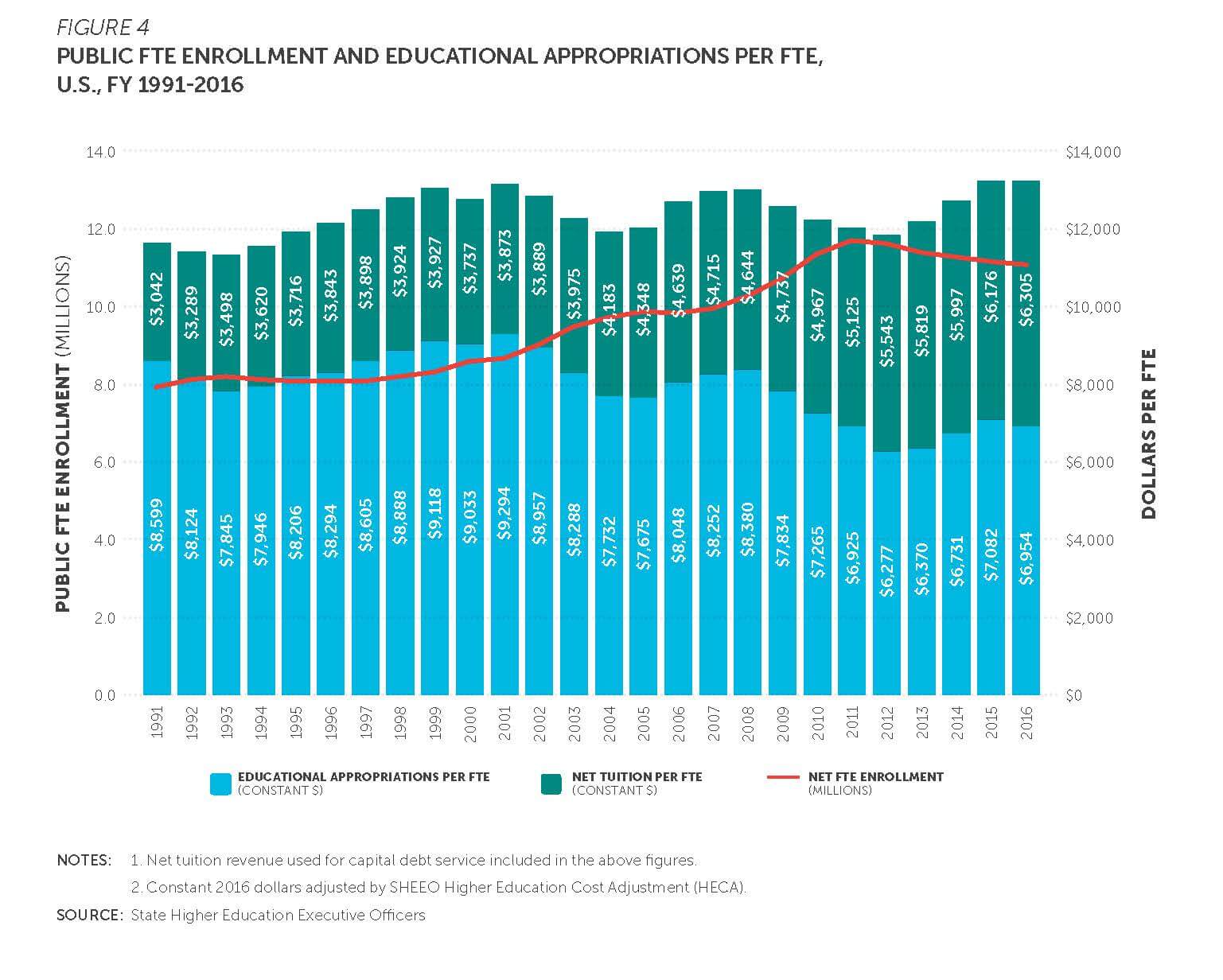And…budget negotiations between the two chambers are at a standstill. We expect the legislature to adjourn on Sunday without a budget and for the Governor to immediately call the first special session.
So, while budget negotiators are holed up in the capitol building, I thought I’d take this opportunity to highlight a new report examining trends in higher education finance that was released today. Each Spring, the State Higher Education Executive Officers (SHEEO) release a look at trends in state spending on higher education.
Here’s a few key highlights from the report:
- Excluding Illinois (which hasn’t passed a state budget in nearly two years!), state support for all of higher education increased by 3.2% between 2015 and 2016
- The average state appropriation per student for 2016 was $6,954; compared to the pre-recession level (FY 2008) of $8,380 per student (in 2016 dollars)
- Reflective of lawmakers concern over college costs, tuition revenue grew at an average of 2.1%–the slowest growth since 2009
- Total enrollment growth grew slowly over the previous year in the four-year sector. But, community and technical colleges continue to see declines in enrollments
- Degrees awarded per FTE student reached their highest level since this information has been tracked. The continued emphasis on student success and degree completion is apparent in national-level data
Below is a chart showing these same trends described above. The primary problem facing higher education in the years since the Great Recession has been enrollment levels well above those seen prior to the recession coupled with more tuition dependence and stagnant or declining state support. The question for policy makers remains: how do we balance affordability concerns with growing enrollments and tight state budgets? We have yet to see how this question will be answered in Washington’s state budget.
